4 Proven Ways How Millet Milk helps in Weight loss: The Secret Weapon No One Told You About

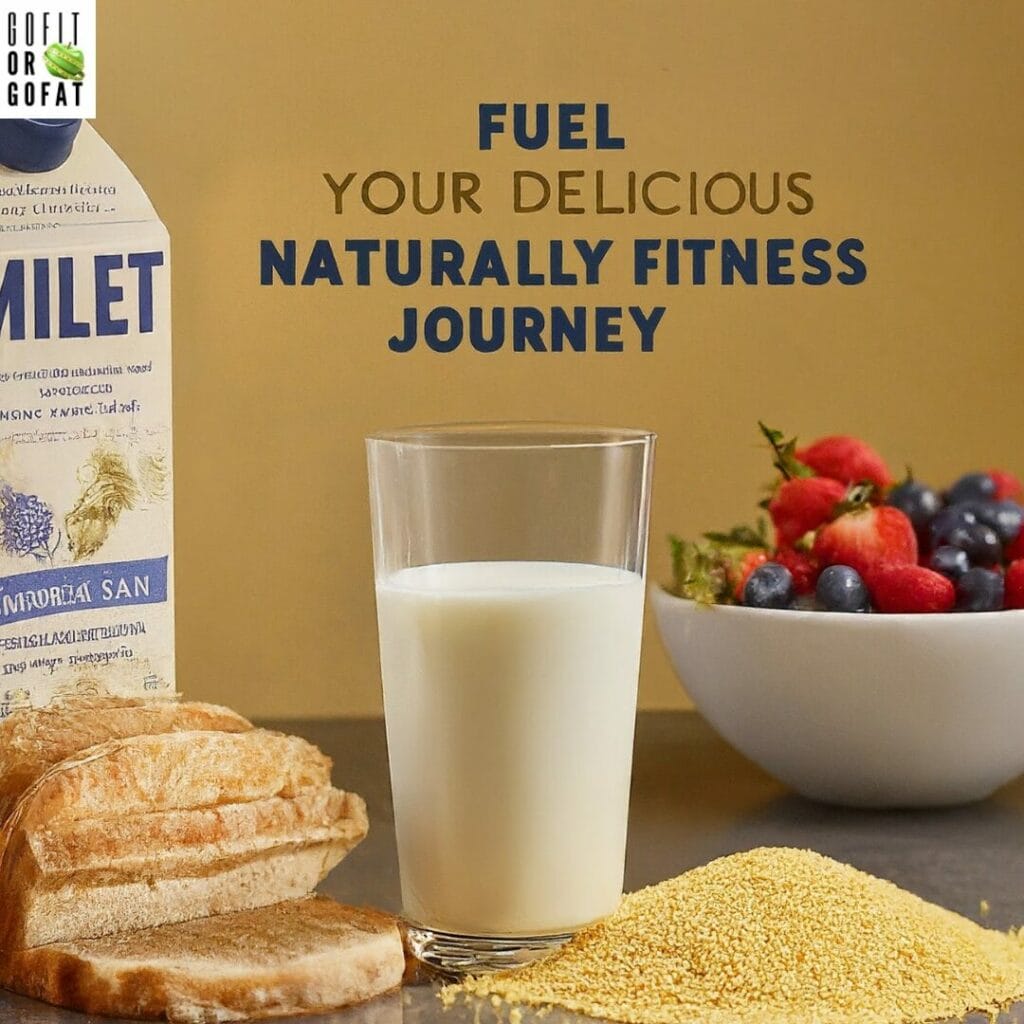
Weight management is buzzing on everyone's lips these days.
The desire to handle weight smartly through natural methods is catching on like wildfire.
More and more folks are leaning towards incorporating wholesome alternatives into their diet – choices that not only taste good but also boost nourishment and well-being.
It's like a shift towards a healthier, happier lifestyle.
Now, let's get into the world of Millet Milk – not just talking about how it helps with weight management, but exploring all the cool benefits this vegan milk brings to the table.
This isn't just about shedding a few pounds; it's a holistic expedition towards embracing a more vibrant and fulfilled life.
Come along as we peel back the layers of this awesome elixir and uncover the richness it contributes to our quest for a healthier, happier existence.
It's like uncovering hidden treasures for a healthier and happier self!
millet milk uses and nutritional information
Millet Milk is making waves, especially in the weight management scene. This isn't just your average drink – it's a nutritional powerhouse.
The milk is tested to be a treasure chest of various essential nutrients including B-complex vitamins such as folate and niacin as well as minerals like phosphorus and magnesium.
But that's not all – it's a treasure chest of iron, calcium, antioxidants, and fiber.
If you’re aiming to enhance your haemoglobin levels or improve digestion and boost bone health, this plant-based rebel is your go-to.
Join me in the excitement – let's uncover the wonders of Millet Milk nutrition and how it plays a superhero role in weight loss.
No more waiting – I'm here to introduce you to the star of the beverage world, Millet Milk.
It's gluten-free, it's sustainable, and it's the cool rebel that's taking over from the traditional dairy milk.
So, are you ready to dive in?
Benefits of Millet Milk in Weight Management
Millet milk is stealing the spotlight in the weight management game.
All thanks to the distinct nutritional composition and a bunch of health-boosting properties found in millets.
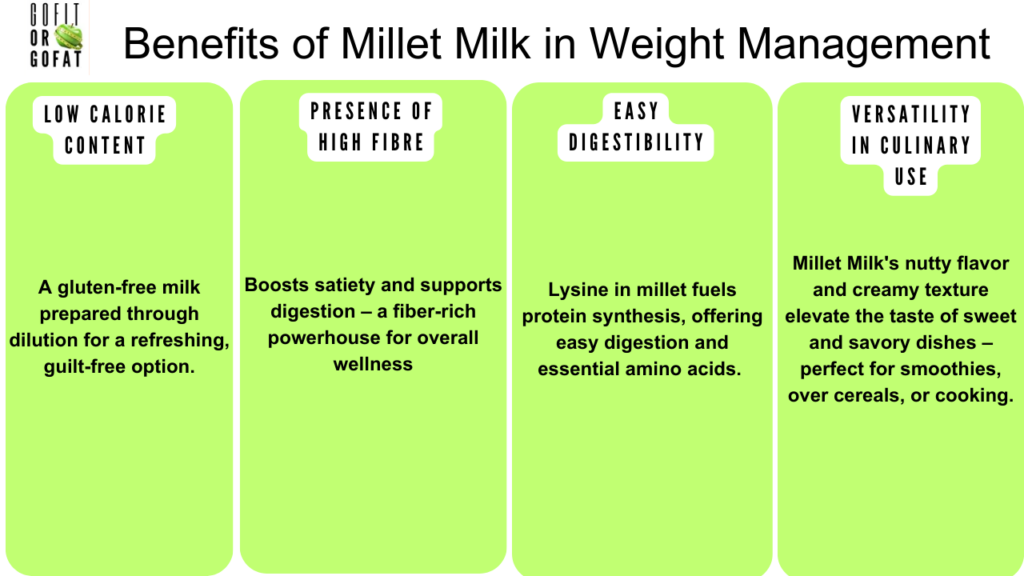
It's not just a beverage; it's a compelling choice that's winning the hearts of all.
Here’s a detailed analysis of the Millet Milk properties and its effectiveness in losing weight.
Let’s check out the millet milk benefits!
1. Low Calorie Content
In comparison to traditional dairy milk, millet milk is tested to be naturally low in calories.
Its low-calorie content is a result of the following
- Millet is like the superhero of grains – packed with nutrients without the calorie overload. It's got your vitamins, minerals, and fiber game on point, all without weighing you more with extra calories.
Now, imagine millet taking the lead in your favorite milk recipe. The milk prepared from millet inherits all the good stuff from the grain without piling on the calories.
It's basically a plant-based milk superhero that says 'no' to the saturated fats you find in regular dairy. A win-win for your taste buds and your health!
- Millet has a different protein setup compared to grains with gluten. You won't find glutenin and gliadin in millet, which is a good thing. Why?
Because when you make milk from millet, you're skipping out on the extra fat that usually comes with gluten. This makes it not just a safe choice but a low-calorie and nutritious alternative to regular animal milk.
- The gluten-free property of the Millet grain makes Millet milk a safe and suitable pick for those who are sensitive to gluten, like our Celiac friends.
Choosing this gluten-free option isn't just a preference; it's a practical and nutritious call for anyone following a gluten-free lifestyle.
- Preparation of millet drink initially requires dilution with water and then straining of the mixture. It has already been scientifically proven that foods with high water content tend to be lower in calories per volume.
So, when you prepare this unsweetened millet milk through dilution, you're not just getting a gluten-free treat – you're getting a drink with far lower calorie density
Trust me, it's good for your taste buds and your health.
2. Presence of high fibre
Millet brings serious fiber to the table. And when you whip up milk from millets, you're not just getting a drink – you're getting a satiety powerhouse. This means you feel fuller for longer, helping you cut down on snacking and supporting those weight loss goals. Plus, the fiber in millet milk does wonders for your digestive tract, helping get rid of bloating issues or gas.
3. Easy Digestibility
Millet is no lightweight when it comes to protein. It contains amino acids which are the building blocks of millet proteins. Lysine, an essential amino acid, that is often present in limited amounts in other grains such as wheat, is relatively high in millet.
Now, in our body, the digestion of amino acids is an essential and natural process for protein synthesis and to carry out various physiological functions. Now, our bodies love digesting amino acids; it's a natural process that fuels protein synthesis and is easy on our stomach. This makes the millet milk easy on the digestive system and a perfect option for individuals facing digestive sensitivities.
And here's the bonus: the balanced mix of nutrients in millet milk means you get a steady energy release. This prevents extreme fluctuation in blood sugar levels that lead to overeating. It's a win-win for your digestive system and your energy levels.
4. Versatility in Culinary use
The subtle nutty flavour and creamy texture of Millet Milk have managed to turn it into a versatile ingredient suitable for both sweet and savory culinary applications. Pour it in a smoothie, splash it over your cereal, or throw it into your cooking – Millet Milk steals the show. It's not just a milk swap; it's the secret ingredient that makes every dish pop.
Is millet milk healthy?
Millet milk is like your sidekick for weight management. It's easy on the tummy, keeps you feeling full, and helps you cut back on calories.
With a low glycemic index, it's a champ at keeping your energy levels steady and saying 'no' to those sneaky cravings.
Choosing millet milk is like choosing a buddy for a healthy lifestyle.
It's got the right nutrients in the right balance, supporting your well-being and your goals.
In the world of plant-based goodies, millet milk isn't just a tasty choice; it's your friendly guide to a healthier, more vibrant you.
Plant-based milks: a complete guide to preparation and preservation
Various plant-based milks flood the market, but when it comes to my health, I lean towards the homemade version. I find it a bit of a challenge to track down plant milks bought from shop without unwanted additives.
Homemade plant-based milks not only do wonders for your health but also save you a few bucks, especially when compared to the animal based alternatives. I can whip up about 6-7 cups for just a dollar – now, that's cost-effective!
Which millet milk is best?
Determining the "best" millet milk can depend on individual preferences, dietary needs, and taste preferences.
Within the millet family, different millets are there that can be used to make millet milk recipe. Each may offer distinct flavors and nutritional profiles.
Some common types of millet used for millet milk include
Browntop Millet Milk:
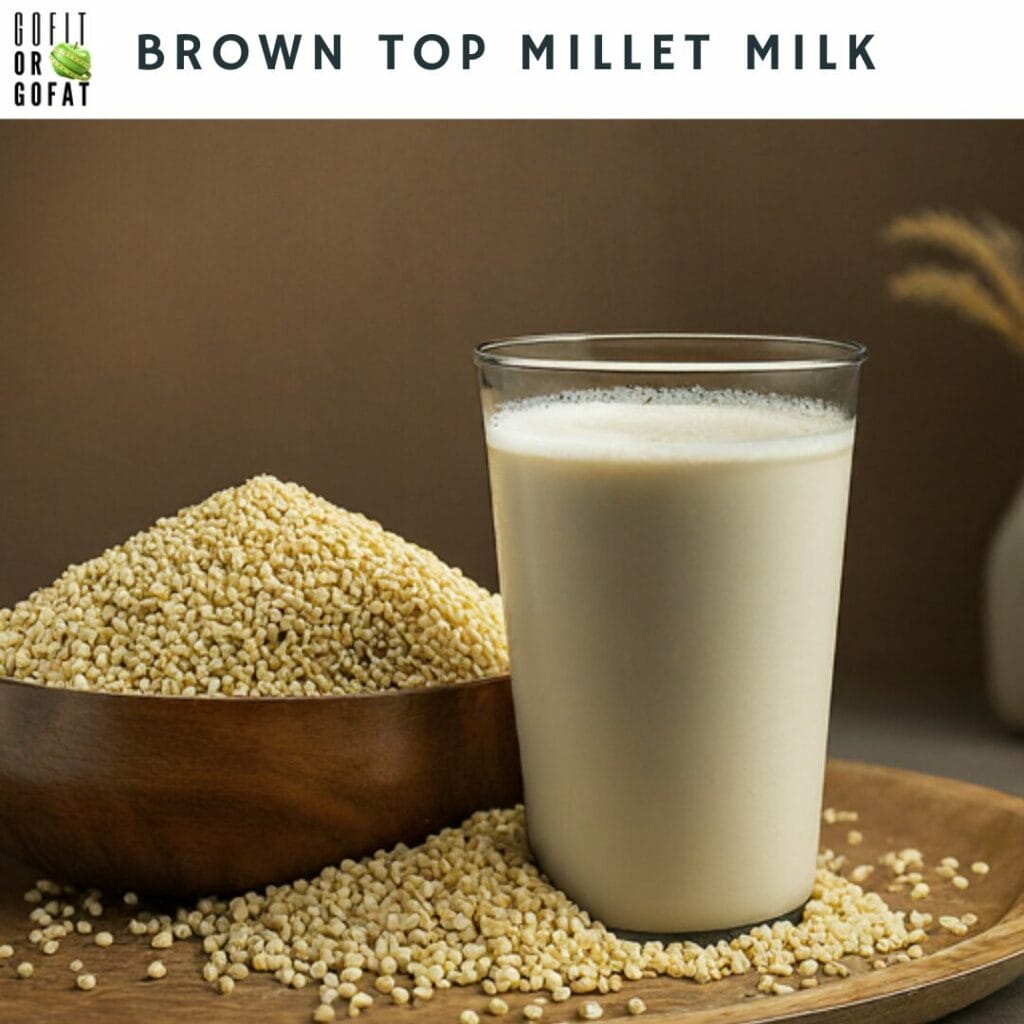
Nutritional Benefits: High in dietary fiber, iron, and magnesium.
Health Benefits: Supports digestive health, contributes to better iron absorption, and aids in bone strength.
Foxtail Millet Milk:
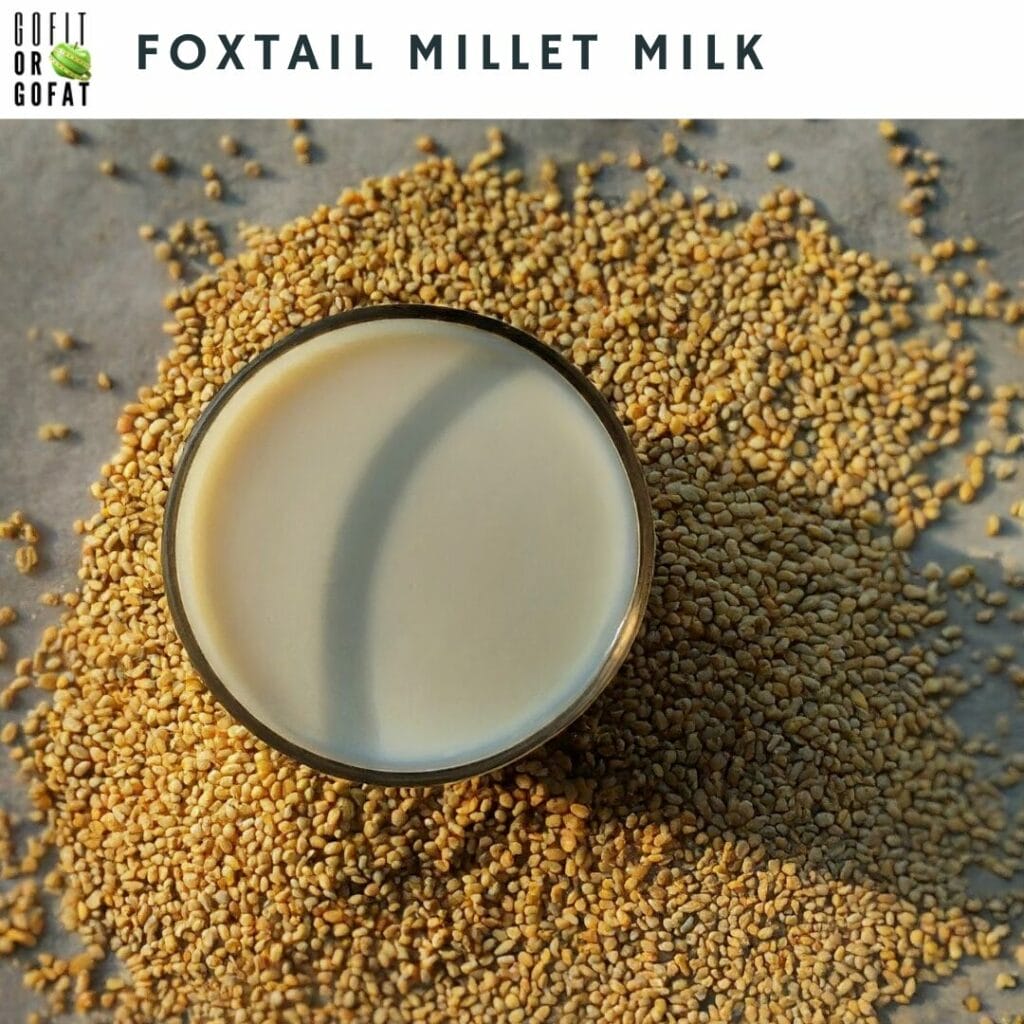
Nutritional Benefits: Rich in antioxidants, zinc, and copper.
Health Benefits: Supports overall health, neutralizes free radicals, and contributes to various physiological processes.
Kodo Millet Milk:
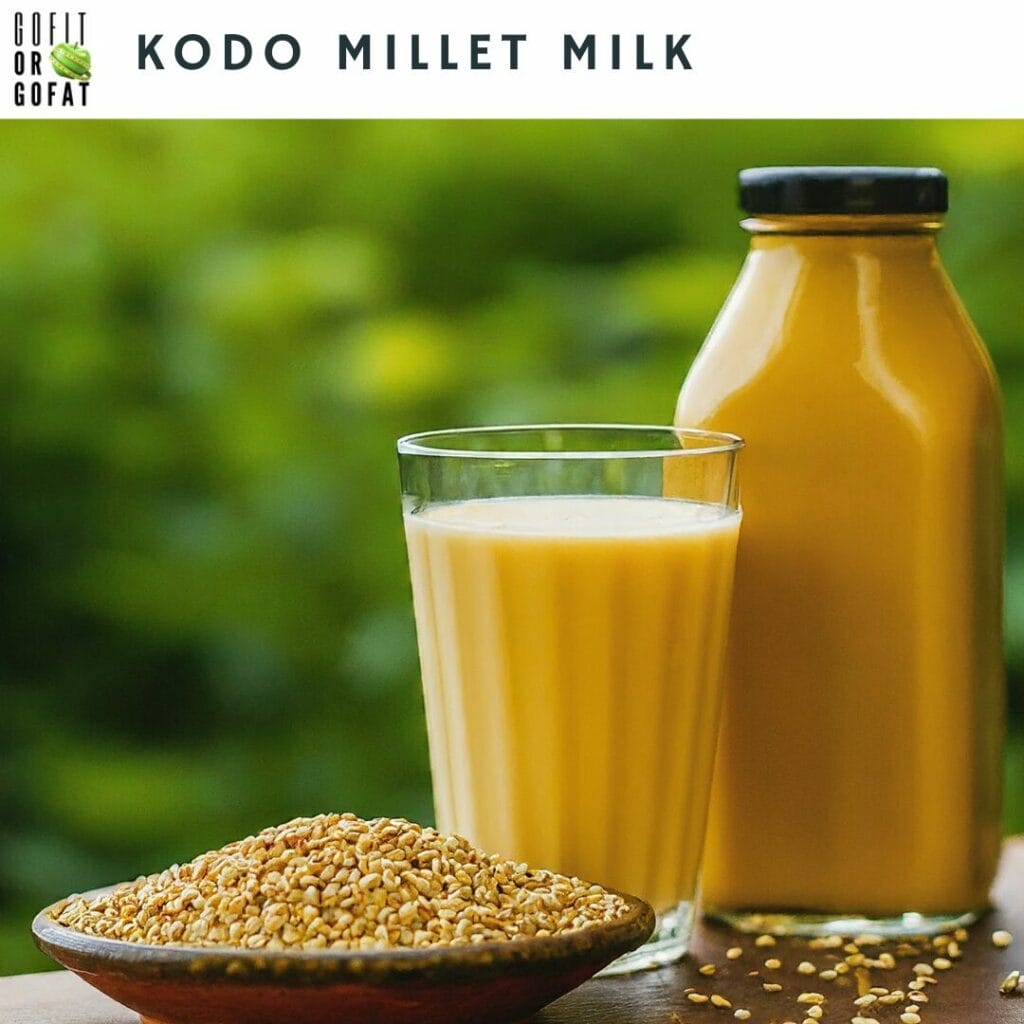
Nutritional Benefits: Packed with fiber, antioxidants, and essential minerals.
Health Benefits: Supports digestive health, provides energy, and may help in weight management.
Little Millet Milk:
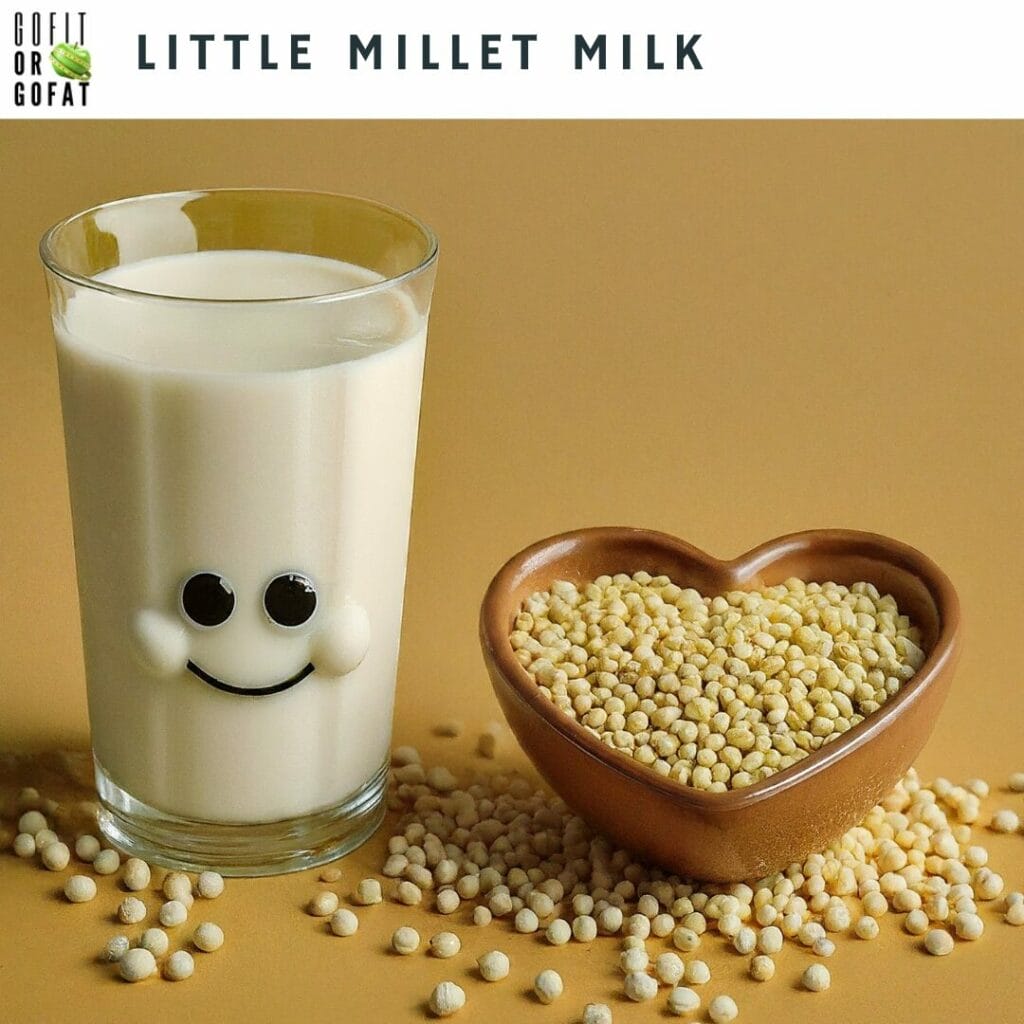
Nutritional Benefits: Contains vitamins, minerals, and antioxidants.
Health Benefits: Supports immune function, aids in digestion, and provides a good source of energy.
Barnyard Millet Milk:
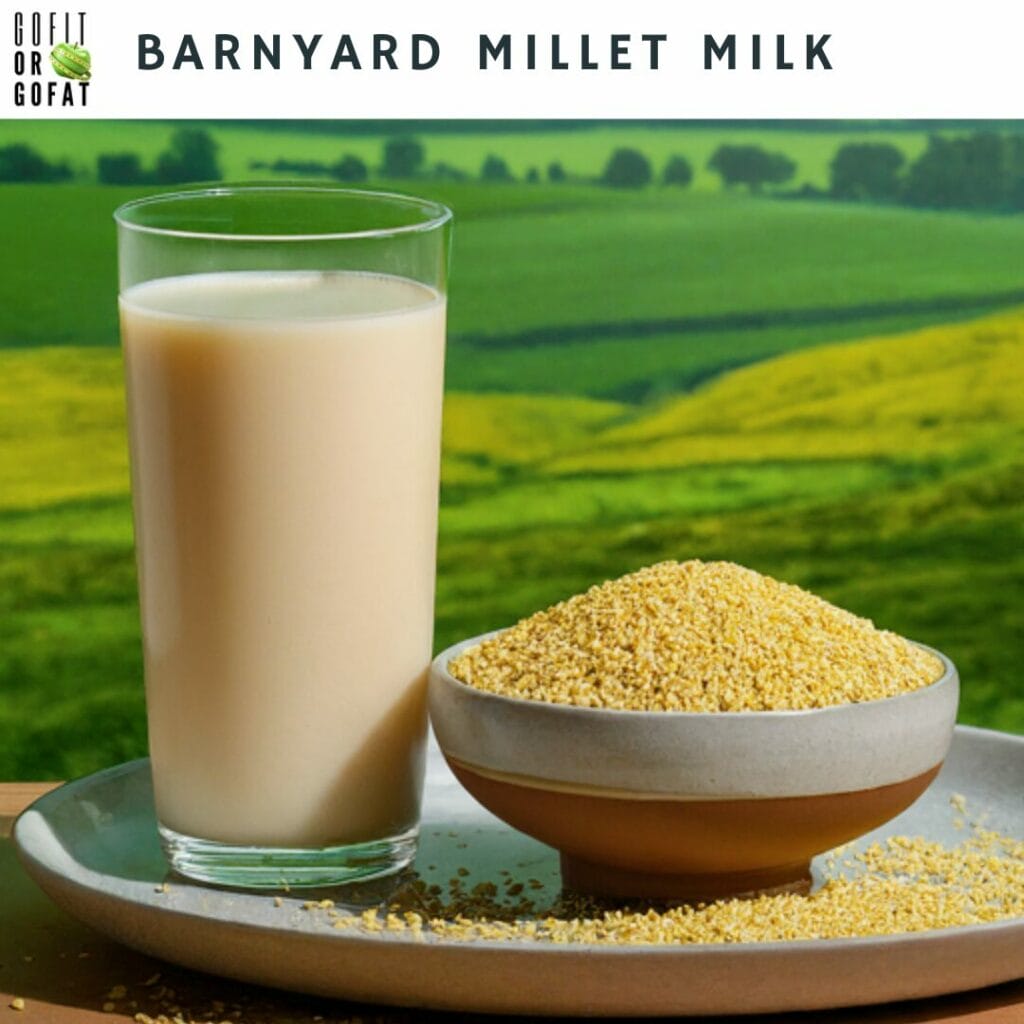
Nutritional Benefits: High in fiber, iron, and calcium.
Health Benefits: Supports bone health, aids in digestion, and provides sustained energy.
Sorghum (Jowar) Milk:
Nutritional Benefits: Contains antioxidants, vitamins, and minerals.

Health Benefits: Supports heart health, provides a good source of energy, and may aid in weight management.
Fonio Millet Milk:
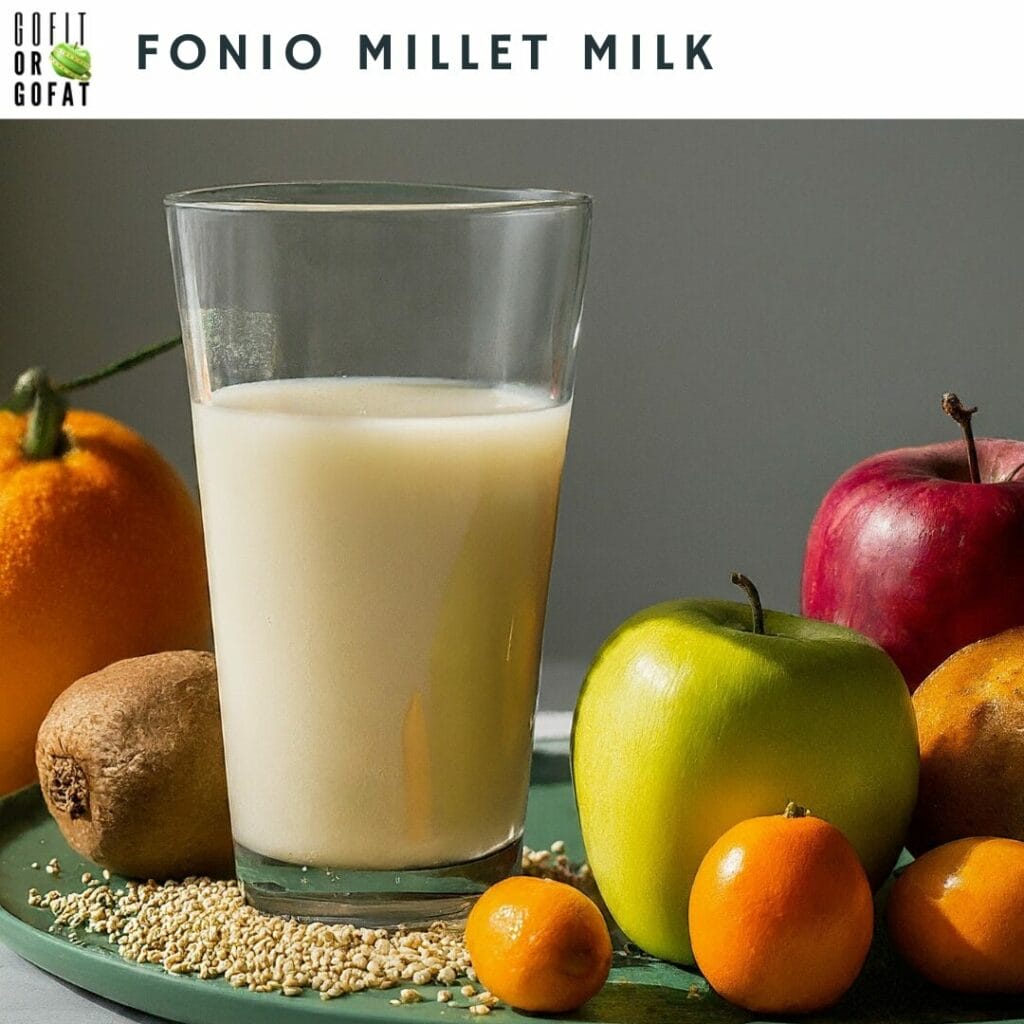
Nutritional Benefits: Rich in amino acids, vitamins, and minerals.
Health Benefits: Supports muscle health, aids in digestion, and provides essential nutrients.
Pearl Millet (Bajra) and Ragi Blend Milk:
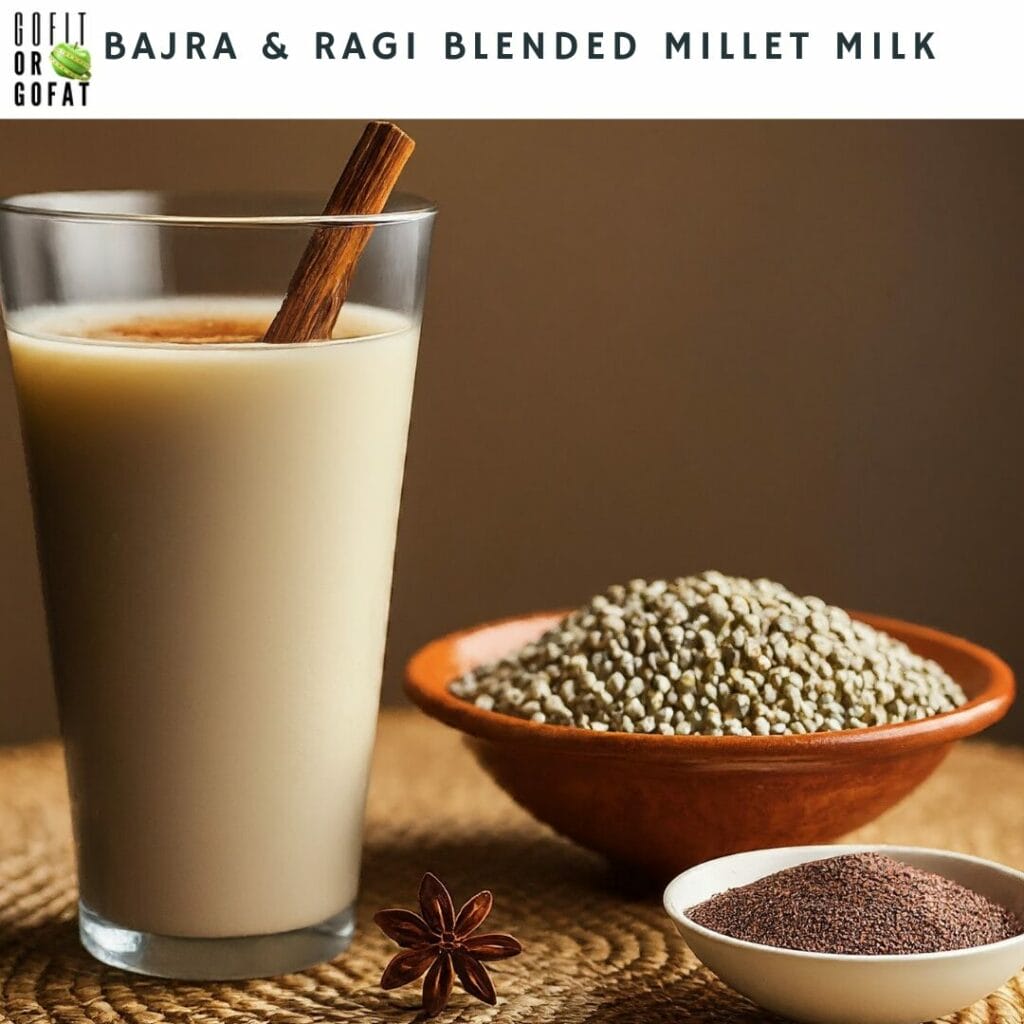
Nutritional Benefits: Combines the benefits of pearl millet (Bajra) and finger millet (Ragi).
Health Benefits: Provides a diverse range of nutrients, supports bone health, and aids in digestion.
Quinoa Millet Milk:
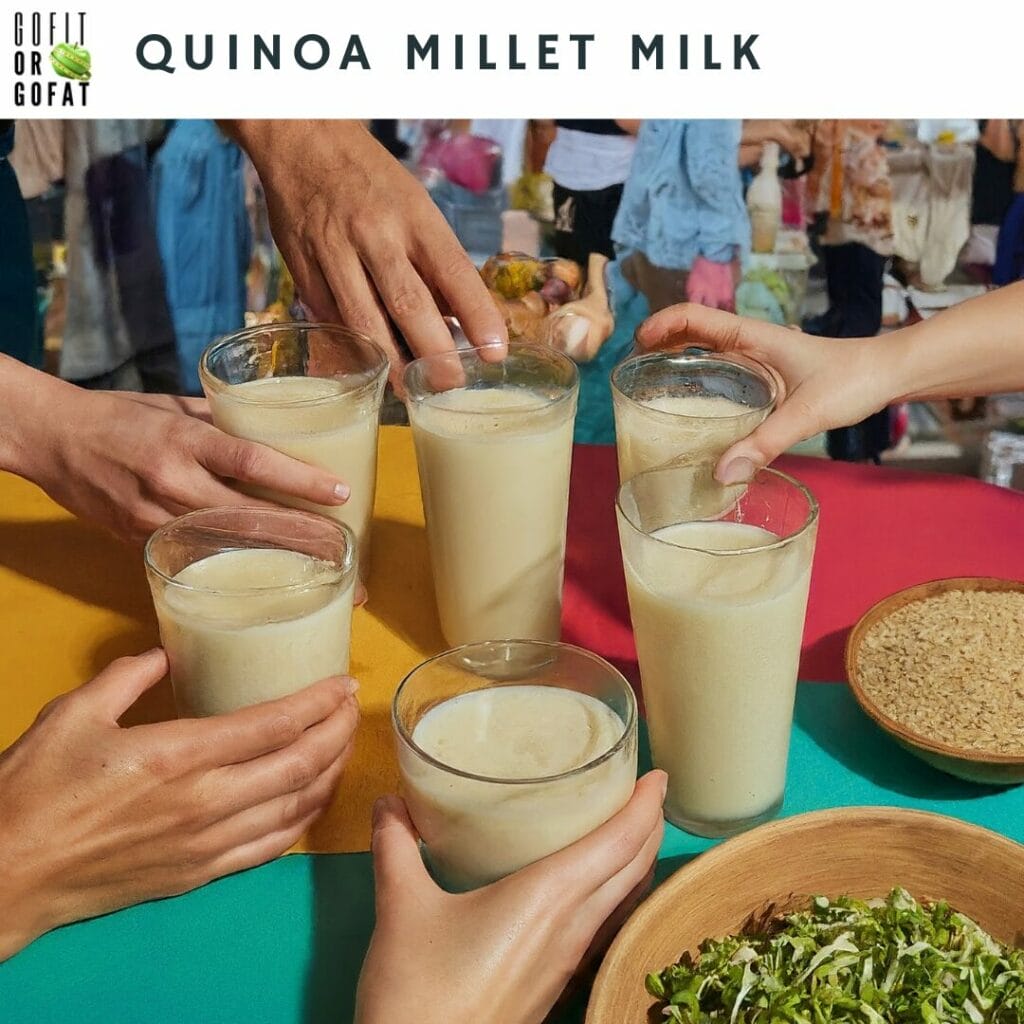
Nutritional Benefits: High-quality protein, rich in fiber, and contains essential amino acids.
Health Benefits: Supports muscle health, aids in weight management, and provides a complete protein source.
Things to consider while preparing Millet Milk
Adding water during the blending process is a must for making Millet Milk.
Focus is to be given on consuming sprouted millet milk.
It's not just about the flavors; it's about unlocking all the essential nutrients, vitamins, and minerals from the millet.
This step ensures a neutral base and boosts the nutritional profile of the millet milk.
Adjusting the water content is the secret sauce.
Some like it creamy, some prefer it lighter.
Customizing the thickness based on personal preference or specific recipes is a game-changer.
I'm a fan of refreshing, thin, and smooth millet milk, especially before hitting the gym.
How to use Millet Milk?
You can enjoy your Millet Milk in several ways.
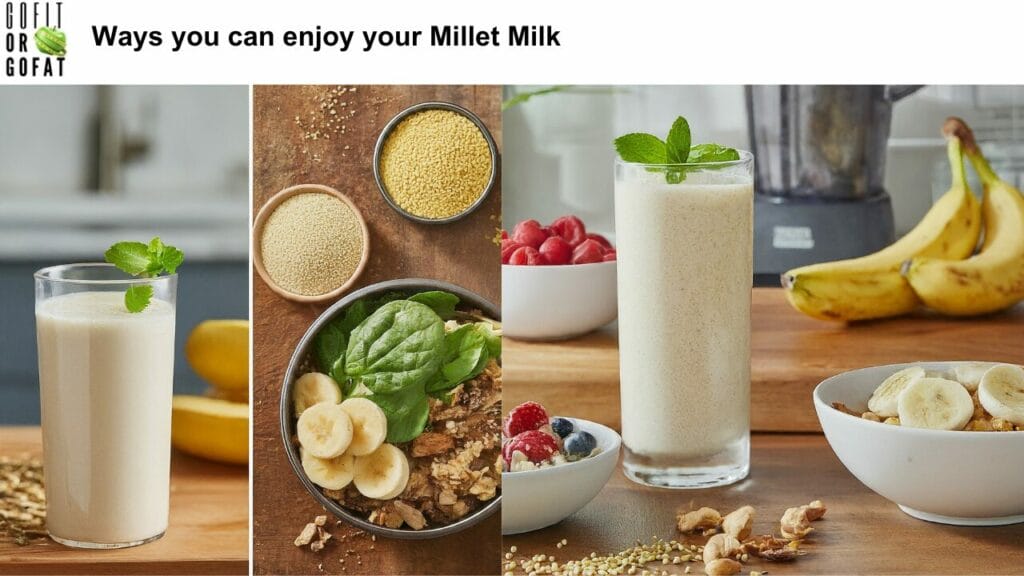
It can be:
- As a Beverage: Enjoy Millet Milk as a nutritious beverage.
- In Smoothies: Use Millet Milk as a base for your favorite smoothies.
- Over Cereals: Pour it over cereals or muesli for a wholesome breakfast.
- In Cooking: Incorporate Millet Milk into recipes for cooking and baking or even for preparing soups.
The Millet Milk I prefer
My pre-workout go-to is Ragi milk, better known as Finger Millet Milk.
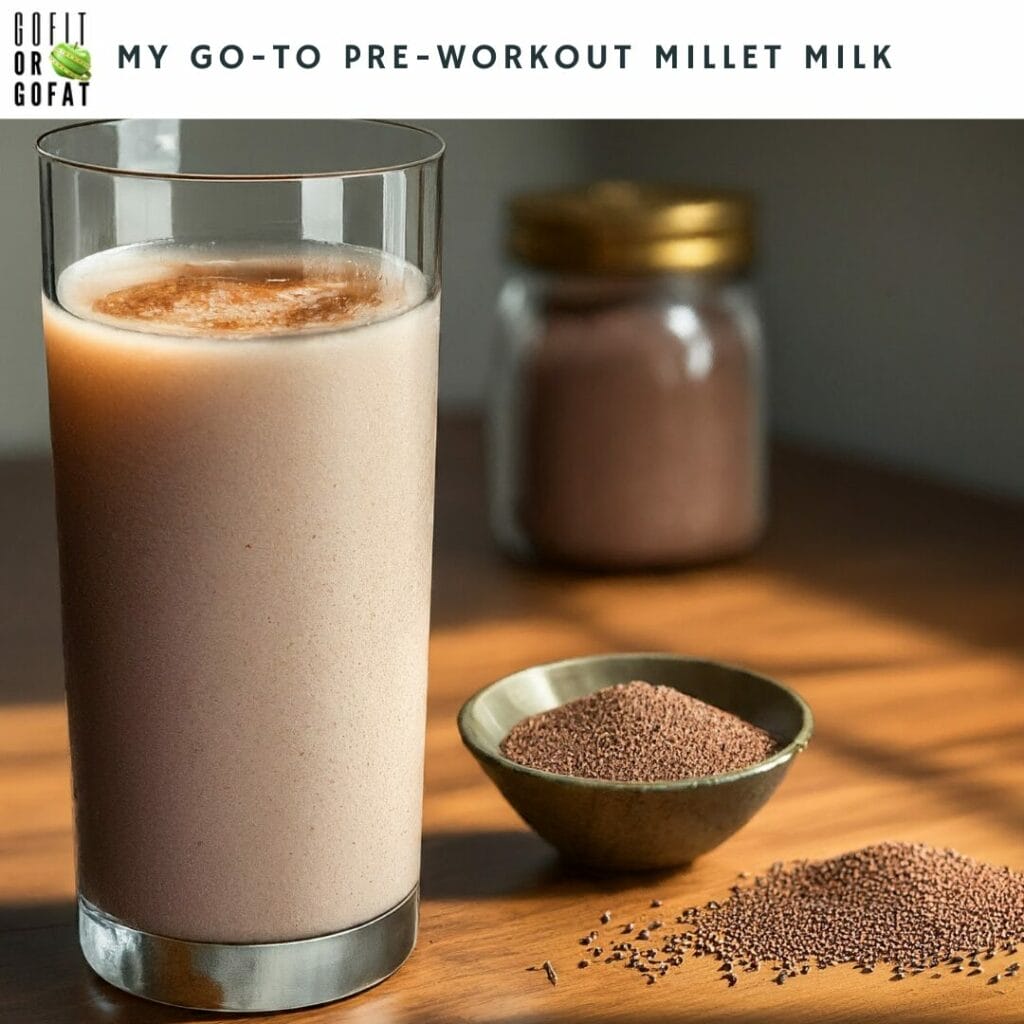
It's a game-changer that keeps me energized throughout my intense workout.
It's not just a quick energy fix; it's my way of investing in long-term bone health.
For my smoothie, I prepare the milk by mixing around 2.5 cups of water with 1 cup of soaked and sprouted ragi.
This combo gives me the right consistency and the perfect nutrient blend for my fitness journey.
It's amazing how a simple tweak in the recipe turns each sip into a burst of refreshment, making my workout routine more enjoyable and effective.
Cheers to a personalized kick of vitality!
How do I prepare Ragi milk? A complete guide to preparation and preservation
Ragi Milk, derived from sprouted finger millet, is a nutritional powerhouse that combines rich flavor with wholesome goodness.
This guide will walk you through the step-by-step process of how to make finger millet milk and preserve its freshness.
Step 1: Prep the Ragi: Washing and Scrubbing Ragi

- Start with 1 cup of ragi in a bowl.
- Wash it thoroughly by scrubbing it 2-3 times with your hands to remove dust and impurities. Then, discard the water.
Step 2: Soak and Elevate:
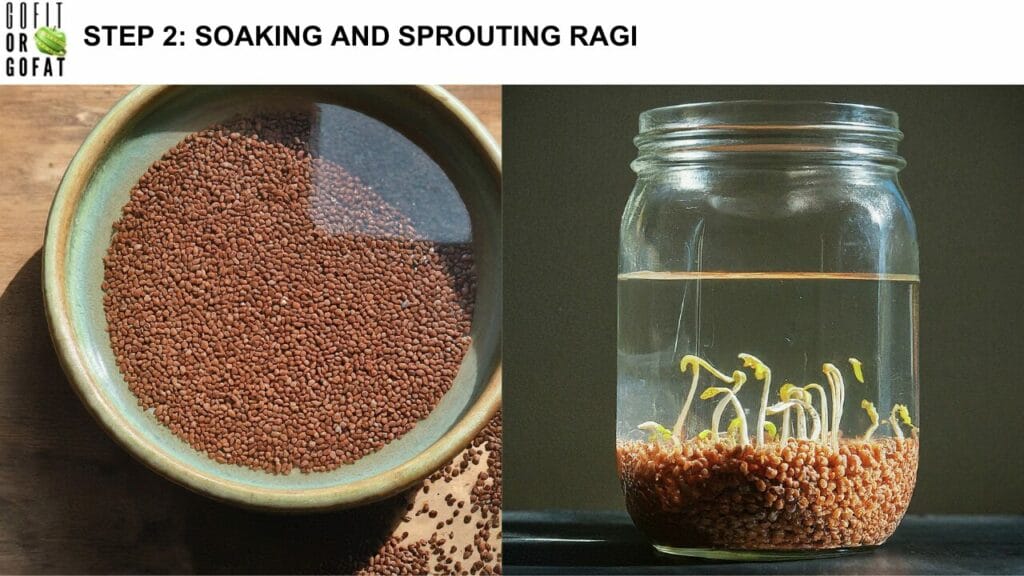
- After cleaning the Ragi well, add 2 cups of fresh water to the Ragi and soak it for a minimum of 2-3 hours, preferably overnight.
- Soaking does wonders for millet! It's like a secret trick – phytic acid levels drop, making minerals more available.
Plus, soaked ragi grains not only become super blendable but also increase milk yield. It's a quick win for both taste and texture! - When soaked well, its phytic acid content reduces, making minerals more available.
Also, soaking helps soften the ragi grains, making them easier to blend resulting in a smoother texture for millet milk and the milk yield increases too. - With this ragi, you can also soak 6-7 almonds for a more nutty flavour. (Optional)
- To acquire greater health benefits from the milk, after soaking, I recommend you drain the water and let the ragi sprout for a day.
Sprouting enhances the nutritional value of ragi, making it easier to digest. (Optional)
Step 3: Blending

- Drain the water and toss the soaked ragi and almonds into a mixer jar.
- You can enhance the flavor by adding 1/4 cup fresh coconut and 2-3 cardamom if you desire. (Optional)
- Pour in 2-2.5 cups of water and blend until irresistibly smooth.
This will form the base of your Ragi Milk.
Step 4: Strain and Savour

- Strain the blended magic using a strainer. Press the puree with the back of a ladle to extract all the goodness.
- For a smoother texture, I recommend you strain the blended mixture using a fine mesh or cheesecloth to remove any residual grain particles.
- Return the leftover ragi paste to the mixer, add another cup of water, and blend again.
Repeat this dance 2-3 times until you'll be left with mainly ragi skin - a sign of extracting all the goodness.
Step 5: Sweetening (Optional)

- Dissolve jaggery to taste.
- You can even add natural sweeteners like honey, maple syrup, or dates to taste
- Adjust the consistency with water and stir well to incorporate the sweetness evenly into the Ragi Milk.
Step 6: Serving Options

- Congratulations! Your super healthy and nutritious Ragi Milk is ready.
- Serve it chilled or warm.
- For a warm hug, transfer it to a steel glass, place it in a pot of hot water with a lid for 2 minutes, and enjoy the cozy warmth.
As I mentioned earlier, my go-to way of enjoying millet milk is through a delightful smoothie.
It's my ultimate go-to meal on lazy cooking days too, and Ragi Milk is the superstar that keeps me both satisfied and on top of my nutrient game.
Curious about my smoothie recipe using home-made Ragi Milk?
Here's the scoop: I grab my trusty Nutri Bullet blender, pour in some amount of my pre-made chilled Ragi Milk, toss in a favorite fruit (usually a banana or some strawberries), and add two scoops (around 30gms) of oats.

Feel free to adjust the Millet milk quantity based on your desired smoothie consistency.
Now, for that extra oomph, I throw in a scoop of my homemade peanut butter and blend everything to perfection.
No added sweeteners for me; I like to keep it natural.
And there you have it – a chilled Ragi Milk smoothie ready to be savored.
It's my no-fuss, nutrient-packed delight!
Preservation Tips for Finger Millet Milk
Refrigeration: Store any leftover Ragi Milk in a sealed container in the refrigerator.
Consume Within: For optimal freshness, consume within 2-3 days.
Avoid Contamination: Use a clean spoon to scoop out the desired amount to prevent contamination.
Freezing (Optional): Ragi Milk can be frozen in ice cube trays for future use in smoothies.
With this comprehensive guide, I guess you're ready to create and savor the goodness of Ragi Milk.
Whether enjoyed solo or as a versatile ingredient, Ragi Milk is a tasty and nutritious addition to your daily routine.
Does millet have side effects?
Millet stands out as an uncommon allergen, with rare instances of allergic reactions.
This unique characteristic makes it an excellent choice for individuals with diverse dietary needs.
While millet is generally known for its easy digestibility, individual responses to foods can vary.
One notable advantage of millet is its lower content of antinutrients, such as phytic acid, in comparison to some other grains.
Phytic acid, known to inhibit mineral absorption, is found in lower quantities in millet. This may contribute to improved nutrient absorption and a gentler digestive experience.
However, the ease of millet digestion isn't solely determined by its composition.
Factors like personal tolerance, cooking methods, and overall dietary habits also influence how well millet is digested by different individuals.
Who should not eat Millet?
While millet is generally recognized as a nutritious grain, certain individuals may need to exercise caution or consider limiting its consumption.
Here are groups of people who might want to be mindful of their millet intake:
- People with thyroid Issues: Millet contains goitrogens, which can impact thyroid function.
Individuals dealing with thyroid disorders, especially hypothyroidism, should be cautious about their millet consumption. - Individuals facing Nutrient Absorption Issues: Millet's phytic acid can bind to minerals, potentially affecting absorption.
Those with conditions impacting nutrient absorption may consider moderating their millet intake. - Individuals with Celiac Disease or Gluten Sensitivity: Although naturally gluten-free, millet may face cross-contamination during processing.
People with celiac disease or gluten sensitivity should opt for certified gluten-free millet products. - Infants and Young Children: Millet contains compounds that may pose digestion challenges for young ones.
Introducing millet gradually and in suitable forms within their diet is recommended. - Allergies: While millet allergies are uncommon, individuals with known allergies to grains or seeds should monitor for adverse reactions.
- Individuals with Oxalate Sensitivity: Certain millet types, like finger millet, contain oxalates.
Those prone to kidney stones or with oxalate sensitivity may need to moderate their consumption. - Individuals on Low-Carb Diets: Millet is a carbohydrate-rich grain.
Individuals following very low-carb or ketogenic diets may need to be mindful of their millet consumption to stay within their dietary guidelines.
So, I would suggest individuals with specific health concerns consult healthcare professionals or registered dietitians before making significant changes to their diet, including the introduction of new foods like millet.
Conclusion
In a world where weight management dominates conversations, the shift towards natural, wholesome alternatives is palpable.
The resonance of a healthier, happier lifestyle echoes in the choices we make.
Amidst the myriad of plant-based milk options, the benefits of Millet Milk shine bright.
Its low-calorie content, high fiber, easy digestibility, and culinary versatility make it a sidekick in your weight management journey.
It's not just a beverage; it's your friendly guide to a healthier, more vibrant you.
As we conclude, remember that individual responses to foods vary, and the ease of digestion isn't solely determined by composition.
While Millet Milk stands out as a nutritional hero, personal tolerance, cooking methods, and dietary habits play crucial roles.
Cheers to embracing a lifestyle that resonates with health, happiness, and the richness of nutritious choices!
In this pursuit of well-being, let's continue celebrating the joy of discovering hidden treasures in healthier alternatives.🌾🥛✨
FAQs
What is millet milk?
Millet milk is a plant-based alternative to dairy milk made from millet grains. It's rich in nutrients and offers various health benefits.
How does millet milk help with weight loss?
Millet milk aids in weight loss due to its low-calorie content, high fiber, and easy digestibility, which help promote satiety and regulate blood sugar levels.
Is millet milk suitable for people with gluten sensitivity or celiac disease?
Yes, millet milk is gluten-free and safe for individuals with gluten sensitivity or celiac disease.
What are the nutritional benefits of millet milk?
Millet milk is a rich source of B-complex vitamins, minerals (such as iron, calcium, magnesium), antioxidants, and fiber, supporting overall health and well-being.
How can I incorporate millet milk into my diet?
Millet milk can be used as a beverage, in smoothies, poured over cereals, or in cooking and baking to enhance nutritional value and flavor.
Are there different types of millet milk?
Yes, various types of millet, such as browntop, foxtail, kodo, little, barnyard, sorghum, fonio, pearl, and quinoa millet, can be used to make millet milk, each offering unique flavors and nutritional profiles.
What are the considerations for preparing millet milk at home?
When preparing millet milk at home, it's essential to soak the grains, adjust water content for desired consistency, and strain the mixture for a smoother texture. Additionally, customization based on personal preference is key.
Are there any side effects or contraindications associated with millet milk consumption?
While millet milk is generally safe for consumption, individuals with thyroid issues, nutrient absorption issues, gluten sensitivity, allergies, or oxalate sensitivity may need to moderate their intake or seek advice from a healthcare professional.
How should millet milk be stored and consumed to maintain freshness?
Millet milk should be stored in a sealed container in the refrigerator and consumed within 2-3 days for optimal freshness. It can also be frozen in ice cube trays for future use in smoothies.
Can millet milk be used as a substitute for dairy milk in recipes?
Yes, millet milk can be used as a substitute for dairy milk in various recipes, including cooking, baking, and preparing soups, offering a nutritious and flavorful alternative.
Similar To This:

How You Can Prepare Brown Top Millet Milk in 5 Easy Steps?
Join us!
to never miss our coolest articles.
No spam!

